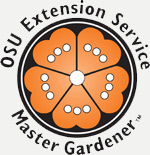Home
Who we are
What we do
Resources
- Online Resources
- Frequently Asked Questions
- OSU Gardening Encyclopedia
- OSU Gardening Calendar
- 10–Minute University™
Community & Urban Horticulture
MG Community
- MG Referral Forum
- Moodle
- Newsletter
- Forms
- Office Info Binder
- Contacts
- CERVIS Instructions
- CERVIS Event Registration
- CERVIS Administrator Login

OSU Gardening Calendar
July
Maintenance and Clean Up
- Mound soil up around base of potatoes. Gather and eat a few "new" potatoes from each hill, when plants begin to flower.
- Early morning is the best time to water vegetable and flower gardens to reduce evaporation. Water the soil, rather than leaves to reduce disease. Water deeply and infrequently to encourage root growth.
- Hanging baskets of flowers or vegetable plantings need careful attention to watering and feeding during extended periods of hot weather.
- Weed and fertilize rhubarb and asparagus beds. A mulch of compost or rotted cow manure works well as fertilizer. Water deeply to develop crowns for next year.
- Mulch to conserve soil moisture with paper, plastic, sawdust, etc.
- Stake tall-growing flowering plants such as delphinium, hollyhocks, and lupine. Stake tomatoes, as necessary.
- If a green lawn is desired, make sure lawn areas are receiving adequate water (approximately 0.5 to 1.5 inches per week from June through August). Deep watering less often is more effective than frequent shallow watering. Measure your water use by placing an empty tuna can where your irrigation water lands.
- Make compost of lawn clippings and garden plants that are ready to be recycled. Do not use clippings if lawn has been treated with herbicide, including "weed-and-feed" products. Do not compost diseased plants unless you are using the "hot compost" method (120° to 150°F).
Planting/Propagation
- Midsummer plantings of beets, bush beans, carrots, cauliflower, broccoli, lettuce, kale, and peas will provide fall and winter crops.
- Dig spring bulbs when tops have died down; divide and store or replant.
- Oregon Coast: First planting of Chinese cabbage, kohlrabi, and rutabagas.
Pest Monitoring and Management
- Control hollyhock rust by sanitation, picking affected leaves, or spraying with a registered fungicide. Read and follow label directions.
- Watch for cutworm damage in garden. (In July, climbing cutworms become a problem and large portions of foliage will begin to disappear on established plants.) Use barriers, remove by hand, use beneficial nematodes when soil temperature is above 55°F, or spray with Bt-k according to label directions.
- Late this month, begin to monitor for early and late blight on tomatoes.
- Place traps to catch adult apple maggot flies. You can use pheromone traps to monitor presence of pests.
- July 10: spray filbert trees for filbertworm, as necessary.
- July 10-15: spray peach and prune trees for root borers, as necessary.
- July 17-23: third spray for codling moth in apple and pear trees, as necessary.
- Cover blueberry bushes with netting to keep birds from eating all the crop.
- Watch for early and late blight on tomatoes. Correct by pruning for air circulation, picking off affected leaves, and/or treat with approved fungicide.
- Monitor camellias, holly, maple trees for scale insects. Treat if necessary.
- Monitor rhododendrons for adult root weevils. Look for fresh evidence of feeding (notching). Try sticky trap products on plant trunks to trap adult weevils. Manage root weevils with beneficial nematodes (if soil temperature is above 55°F). If root weevils are a consistent problem, consider removing plants and choosing resistant varieties (See WSU Extension Publication EB0970E for list of rhododendrons exhibiting resistance to adult root weevil feeding.)
- Check leafy vegetables for caterpillars. Pick off caterpillars as they appear. Use Bt-k, if necessary.
- Spider mites can become a problem on ornamental plants, vegetables, and fruit plants during hot, dry weather. Watch for dusty-looking foliage, loss of color, presence of tiny mites. Wash infested areas with water or spray with appropriate pesticides.
- Remove cankered limbs from fruit and nut trees for control of diseases such as apple anthracnose and bacterial canker of stone fruit. Sterilize tools before each new cut.
- East of the Cascades: If necessary, spray for corn earworm as silking begins. Protect bees from spray.
Download a PDF of the July Calendar for easy printing.
Updated September 10, 2009.
Problems, questions, or suggestions? Contact: webmaster@metromastergardeners.org

